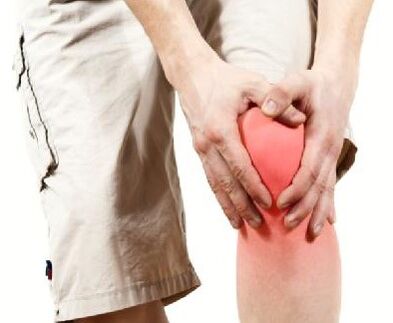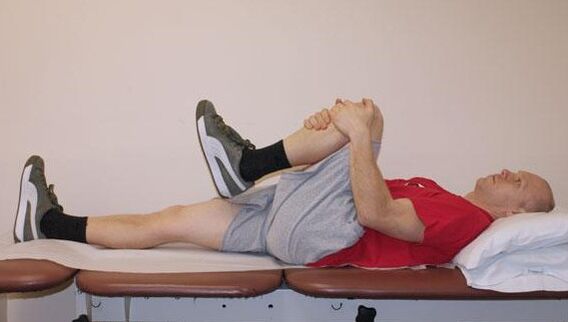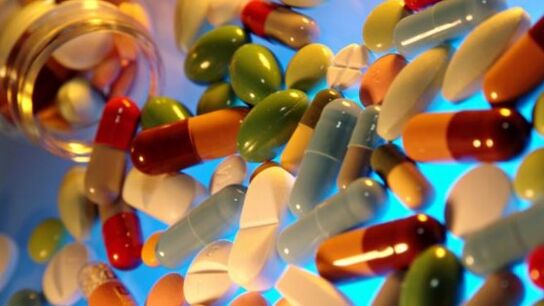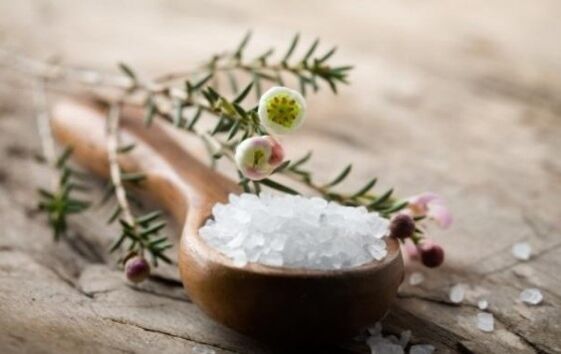The articularity of the knee joint is a disease of slow progressive inflammatory disease. In most cases, the disease is observed in the middle and in the elderly, which is the most common cause of skeletal muscle pain in the knee and disability areas. From this publication, you will learn how to treat knee joint disease.

General description
In the knee joint, the femur and tibia are covered with articular cartilage. There is also a second type of cartilage fabric that forms So-poured meniscus, which acts as layers or shock absorbers. Articular fluid adds extra protection and smoothness. If the cartilage that protects the bone is disturbed and damaged, osteoarthritis begins to develop, thus exposing the surface of the bone and the joint lubricant stops being produced in the required amount. In this case, complete and partial cartilage loss can be observed. This process is usually isolated by a certain area in the joint, in which case this can be caused by injury and chronic joint wear.
The deformed articity of the knee joint is characterized by the process of destroying its cartilage shell. In the future, the closest fabrics such as closest ligaments and bones may also be included in this process. Due to the loss of cartilage, gonads or knee arthritis of the knee joint is accompanied by increased stiffness and joint deformation. Bone spurs (bone plants) are pathological growth of bones and can sometimes be felt from the outside. The surface of the bones is deformed and no longer closed, and is not suitable for each other, such as healthy joints. As a result, the limitations of movement increased.
At the same time, pain occurs, such as in the morning and evening, especially when moving during prolonged periods of immobility, ultimately leading to a decline in quality of life. Stress can also cause pain in the affected joints. An indirect sign of pathological changes in cartilage is visible stenosis in the joint cavity between the femur and tibia in X-ray pictures.

reason
There are many causes of arthritis: it is the aging and wear process of cartilage, overweight, damage, autoimmune diseases, where immunity attacks its own joint tissue, leading to inflammation and its subsequent destruction. An example is rheumatoid arthritis, where two joints are affected at the same time and disability develops. Some experts combine concepts such as arthritis and arthritis in the knee joint, which have similar symptoms and are often caused by the same reasons.
A reduced blood supply to the femoral head may also cause strains to deform, in which case they talked about sterile necrosis. Inadequate knee formation in early childhood can lead to displacement of the mechanical axis and knee degeneration. Post-traumatic arthritis is secondary and develops due to damage to meniscus, anterior or posterior cruciate ligaments.
symptom
There are three levels of joint jointness in the knee joint, and each joint has its own signs. In the first stage, painful pain can be mildly painful, uncomfortable, and swelling regularly. The second degree is accompanied by increased symptoms, the emergence of tightening and the limitation of mobility. When the painful sensation does not actually leave a person and the cartilage is completely destroyed, the disease can get into arthritis in the third-level knee joint.
Arthritis pain may appear suddenly, but most often develop slowly. A person may notice pain in the morning after he wakes up from bed. The knees can get injured when walking up the stairs, or when you have to, and the pain usually only occurs while walking. For people with sensitive weather, weather changes can also cause joint pain.
Swelling is the result of inflammation, increasing regularly with joints. Edema can also be associated with the formation of bone spurs or the accumulation of excess fluid in the knee. For example, they may be more noticeable after a long inaction, or after a long period of time on the desktop. When touched, the skin will turn red and hot. If chronic inflammation occurs in the joint, pain and edema are usually eliminated by taking anti-inflammatory drugs.

As muscle and instability of the entire system weakens, loss of stability develops over time. The situation occurs when a person cannot bend or fully straighten his knees. This symptom is usually accompanied by a second degree knee joint. It feels tight when moving because the cartilage has lost its original smoothness and the amount of synovial lubrication required. In later stages, bone spurs rub against each other as they move, which may cause a squeaking sound.
A limited range of motion can be seen during stairs or during movement. Many people are forced to turn to the help of walkers or crutches. Deformation of the knee joint may be the most terrible symptom of arthritis because it indicates irreversible changes in the joints, making a person become disabled. The knees can be steered to each other both inside and outside. The deformation of the knee is almost meaningless.
diagnosis
The definition of knee osteoarthritis begins with a doctor's physical examination, research on medical history, and conversations with patients. Make sure to pay attention to the doctor who causes the most pain and tell us about the cases of this disease in our family, if any.
Use the following diagnosis for other diagnosis:
- Radiography can show the presence of bone spurs and changes in cartilage;
- magnetic resonance imaging;
- Blood tests allow you to identify autoimmune diseases.
How to treat arthritis in the knee joint and what medicines are needed for this? Find answers to these questions further.
Treatment principles
Standard treatments for such diseases are primarily intended to eliminate pain and eliminate functional limitations. It is worth knowing that painkillers only weaken symptoms, but do not affect the course of the disease and restore damaged cartilage. For treatment, anesthesia analgesics, non-replacement anti-inflammatory drugs, slow-acting gold preparations, corticosteroids, methotrexate, etc. are used.

Additionally, surgical interventions as well as physical therapy and physical therapy procedures may be required. Gymnastics with knee joints can significantly contribute to treatment and exercise is chosen by the attending physician. Although the active research and development of the most effective and effective drugs in modern pharmacology is underway for joint treatment, most drugs still have their side effects and prolonged use disrupts the normal function of the system and organs.
Treat with drugs
Drug treatment of knee joints and joints provides three main directions:
- To relieve pain and reduce the intensity of the inflammatory process in the tissue, non-replacement anti-inflammatory drugs are required;
- Take drugs to restore cartilage, including cartilage protectors: glucosamine and chondroitin;
- Use creams and ointments in complex treatments for joint deformation.
Combined with physical therapy and manual therapy, taking medications can slow down the process of articular cartilage destruction, accelerate the regeneration of cartilage tissue and restore normal function of the limb.
The main purpose of drug treatment is to eliminate pain, improve the nutrition of cartilage, activate the recovery process, increase joint mobility and normalize the blood circulation in the knee.
Nesto Drugs
The most common treatments for joints are non-replacement anti-inflammatory drugs such as diclofenac, indomethacin, pyraxykam, ketoprofen, etc. They are used to relieve pain and reduce inflammation, but long-term treatment of these drugs is not recommended because the group's medications have adverse side effects, including negative effects on the gastric mucosa and intestines, kidney, liver, and cardiovascular system. However, each drug has its own characteristics. Recently, funds have been developed with the lowest health risks of patients.
Furthermore, despite the need for these tools, some studies have found that NSAID can lead to a decrease in the production of proteoglycans, which dehydrates the cartilage tissue, so this medication must be controlled according to the doctor's prescription. The frequency of side effects of NSAIDS increases with its prolonged use, which is necessary for many patients with arthritis. Experts recommend selective anti-inflammatory drugs for long-term use, with fewer side effects and no negative impact on metabolism in cartilage.

Most non-replacement anti-inflammatory drugs are in different form: produced in the form of capsules or tablets for topical external use in the form of injections and ointments or gel solutions.
Recover cartilage
In order for cartilage to nourish and regenerate tissues, compounds such as cartilage protectors - glucosamine and chondroitin must be continuously ingested. These are useful substances for people with knee osteoarthritis. Their reception should be conducted for a long time, starting from six months or more, and only in this case can you count on positive treatment effects. Cartilage protectors improve the quality and amount of synovial fluid, unlike NSAIDs, they increase proteoglycan synthesis and contribute to the regeneration of cartilage plates. However, due to this useful nature of these compounds, it should not be considered as the primary treatment for arthritis. Deformed articulation of the knee joint requires the use of chondroitin and glucose preparations for at least 1. 5 years. It is also considered that they cannot recover completely damaged cartilage.
Ointments and creams
Treatment of diseases such as knee joints should include topical use of gels and ointments. Dosages in these forms should not be relied on as the only option for treatment and their use should be considered as a necessary supplement for receiving NSAID and cartilage protective agents. These medications can greatly relieve discomfort, pain, swelling and improve joint mobility.
This effect is explained by the fact that ointments and creams can improve blood circulation in the joints, accelerate metabolism in the cartilage, and therefore its regeneration.
compression
The application of osteoarthritis has a greater effect than the application of ointment. For therapeutic compression, it is usually prescribed, with good anti-inflammatory and analgesic effects, and can penetrate well into the tissue. Bi plants are also effective and can accelerate the metabolic process in cartilage.
injection

Inside the knee joint, the synovial fluid is very sticky, which ensures no tissue friction. An important part of this lubricant is hyaluronic acid, which binds proteoglycans to stabilize the structure of cartilage tissue. In patients with arthritis, the level of this compound in the synovial fluid is significantly reduced, so the latter becomes viscous and the friction increases.
Knee injections based on hyaluronic acid can slow down the progression of osteoarthritis, but only half of those with this diagnosis will get symptoms relief. The injection process is usually three weeks, and the injection is performed every 7 days. After six months, it is recommended to repeat the procedure.
Folk therapy
Knee articulation provides a comprehensive treatment with traditional medical recipes as additional treatments. Such as soups of onion husks, infusions of dandelion leaves, mixtures of aloe vera, vodka and honey, pressurized honey from salt at night, many others deserve attention. It is also recommended to eat more jelly and jelly.
Replace joints
If none of the above treatments results, the operation of replacing joints with an inner chapter is shown. The main goal of the operation is to restore the natural mechanical axis of the legs and to fully release it from pain and discomfort. In this case, a part or the entire joint can be replaced. Continuous improvement of surgical equipment and the quality of implants make such procedures very successful and extensive.























